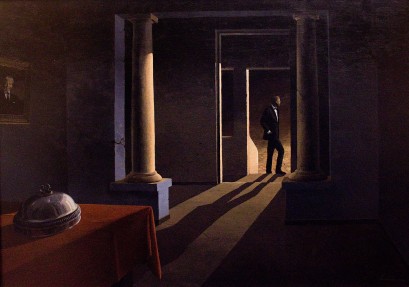Lot #32 - Keith Alexander
-
Auction House:Webb's
-
Sale Name:Important Paintings and Contemporary Art
-
Sale Date:06 Dec 2011 ~ 6.30pm (NZ Time)
-
Lot #:32
-
Lot Description:Keith Alexander
Keith Alexander – Untitled and The Celebration Keith Alexander was born in Zimbabwe, then named Rhodesia, in 1946. He would later move to S
acrylic on stretched canvas
760mm x 1060mm
signed Alexander and dated 94© in brushpoint lower right; signed Keith Alexander, dated © 1994 and inscribed The Celebration and 011-884 5552 in ink verso upper left -
Provenance:Purchased from Elizabeth White & Associates, Johannesburg, South Africa, and passed by descent to the present owners. Accompanied by a certificate of authenticity signed by the artist's agent Elizabeth White & Associates, Johannesburg, South Africa, and
-
Notes:Keith Alexander - Untitled and The Celebration Keith Alexander was born in Zimbabwe, then named Rhodesia, in 1946. He would later move to South Africa where he went on to study fine arts at the University of Natal in the mid-1960s. There he would attain a master's degree, his research focusing on surrealist sculptural practice. It could be said that, though he would alter his strategy somewhat in 1975 by choosing to paint flat imagery rather than work with three-dimensional materials, his astute spatial awareness would continue to influence the works that he made. Naturally, his first painted works were firmly grounded in an exploration of surrealist imagery; however, he would soon develop an approach to image-making that sidestepped his fascination with physical impossibilities. A significant turning point in the artist's career occurred after he first visited the vast expanses of the Namib Desert of southern Namibia. In 1982, the year after his visit, his work would be solely dominated by sparse depictions of the Namib Desert. However, not only was it the setting that marked these works as a turning point, but also they embodied a distinct conceptual shift. Pictured in the works was the small mining town of Kolmanskop, a real location situated only a few kilometres from the coastal town of Lüderitz. The town was abandoned in 1954 after its diamond field was exhausted and it is now in a semi-submerged, sandblasted state. In these works, the artist can be seen using space and perspective to inject a sense of unease. While the paintings depict actual architectural sites, the composition suggests that there was some internal narrative at play: that each doorway and window frame had a very specific role to play. In the years following, this ability to construct a narrative using a sparsely assembled set of objects has been at the heart of Alexander's practice. Untitled of 1984 is emblematic of the techniques learnt in the formative part of the artist's career. There are two solitary abodes positioned on top of a hill surrounded by nothing but a lifeless expanse. The more visible of the two buildings is clearly in a state of disrepair, indicated by the fact that its roofing beams are exposed on one side. While only a silhouette of the second house is visible, one assumes that it too is uninhabitable. There is a distinct contrast between the bare rock and loose sand of the hillside and the smooth, almost vacuum-formed texture of the foreground. The golden-yellow haze of the ground mass places the abode on the outer edge of the desert and the salt-licked perfection of foreground indicates that the houses are situated on the edge of the shoreline. While the dwellings are not isolated in the middle of the desert, they are still, in a sense, caught between a rock and a hard place: cemented in a divide between two vast expanses. The Celebration, painted a decade later, presents a different kind of isolation. Here an interior feels as barren as do the deserts with which Alexander is so well versed. In the foreground, a table holds a covered silver serving tray and, in the distance, the artist has painted a man, likely to be a self-portrait, standing just outside of the doorway with his gaze focused to the distance, following that of the viewer. In colonial Africa, it was common for each rural housing compound to have a separate building in which food was prepared and, therefore, the figure has wandered away from a celebration that is happening nearby. His formal attire suggests that he is not where he belongs and yet, his strict denial of the serving tray implies that he has an intimate knowledge of its contents. CHARLES NINOW
-
Estimate:NZ$50,000 - 60,000
-
Realised Price:
-
Category:Art
This Sale has been held and this item is no longer available. Details are provided for information purposes only.










